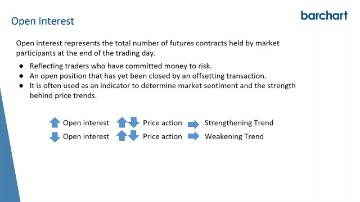Choosing Stocks: The Basics
Content

Also, seek expert opinions from articles, interviews, or other sources. As you research the market, you may discover certain industries tend to offer higher returns on investment. One of the most effective ways to determine promising stocks is to be well-read on current financial trends. We don’t mean following trendy stocks—also referred to as “meme stocks”—that are highly volatile.
Putting money into the stock market is a great way to grow your money. There is no standard procedure
to go about picking stocks and it’s a highly subjective art. It’s good to understand the basics and then develop your own
strategies.
Final Thoughts on How to Pick Stock Options
We always strive to give you the best and most updated information. We also gives you free financial modeling methodology through our academy. Most investment banking firms follow our guidelines to get discounted cash flow statement of companies to see if they are undervalued, overvalued or simply at par value.

Some have a wrong belief that thereʹs less to lose with low-priced stocks. However, regardless of whether a Rs 500 stock plunges to Rs 0 or a Rs 700 stock does likewise, youʹve lost 100% of your initial investment, accordingly, the two stocks carry similar downside risk. Actually, penny stocks are likely less secure than higher-valued stocks, since they will, in general, be less managed.
NerdWallet, Inc. does not offer advisory or brokerage services, nor does it recommend or advise investors to buy or sell particular stocks, securities or other investments. The last step to stock picking is to buy companies trading below your estimate for a fair price. In other words, if your valuation is wrong, you’re preventing big losses by buying well below your fair price. This ratio compares the company’s stock price or market value to the book value per share. Imagine a company liquidated
all of its assets and paid off all its debt, all that would remain is the book value. The price to
book value ratio shows the amount that shareholders are paying for the net assets of any
company.
Research the Company: Find Out What They Do
This type of basic analysis forms the “story” behind the investment, which justifies purchasing a stock. For example, you might note that the emerging markets nations are producing new middle classes made up of people who demand a greater variety of consumer goods. As a result, there will be a surge in demand for certain products and commodities. Now to summarize everything we’ve discovered about these two stocks throughout
this analysis. We will continue with the rest of our analysis using the three stocks that made it through the
PE section. If, however, you cut your losing trades quickly but let your winners run, you can still turn a profit with a winning percentage in the 40s.

Yes I got the idea ready, but was I mentally and financially equipped to carry on with this investment? According to Peter Lynch, the legendary American investor, ‘’strategy doesn’t mean you should buy stocks in your favorite retailer, just because you like shopping at their store. You should never buy any stock without doing homework on the underlying businesses fundamentals’’. Starting to invest can be overwhelming, but with an investment platform specifically designed for people looking to break into stock markets, investing starts to become easier. Once you have chosen companies to invest in, stay up to date on those companies’ financial performance.
The Diversified Portfolio
You should consider the appropriateness of this information having regard to your relevant personal circumstances before making any investment decisions. Past investment performance does not indicate or guarantee future success. Returns will vary, and all investments carry risks, including loss of principal. Moomoo makes no representation or warranty as to its adequacy, completeness, accuracy or timeliness for any particular purpose of the above content. To begin with, it might be a good choice to invest in sectors that you understand and feel comfortable with. At the same time, it would be reasonable to avoid sectors that seem like a total mystery to you.
And some investors are most interested in generating regular income from their investments in the form of dividends and distributions. Stock picking, also known as active investment management, tends to regularly underperform a passive strategy that tracks the broader stock market indexes. In fact, research shows that more than 90% of stock pickers underperform over a 15-year period. Given that the amount you can invest in stock purchases is limited each year, you want to decide which stocks to invest in each year so as to maximize the total returns. ROCE shows investors how many dollars in profits each dollar of capital employed
generates. By doing so, it measures the profitability of a company and how well it employs
its capital.This is particularly helpful when looking at a firm with heavy capital investments.
So if the market is on the rise, most stocks will move upwards too – increasing your chance of making a successful trade. When you’re doing your research, try to avoid making assumptions. Just because you like something, doesn’t mean other people will. Dig into news reports and look at the market’s performance in previous situations to double-check your thesis and make sure it makes sense. Whichever style of trading you choose, it’s important to diversify your portfolio. There are literally thousands to choose from, so how do you make the right decision?
Don’t follow the herd
That said, my goal for my short-term trades is to have a winning percentage of around 55%–60%. If I practice sound money management, that win rate will yield very strong profits. Next, I dive into stocks and other asset classes from a high-level perspective. Using ETF charts, I analyze long and short-term trends each day the market is open.
Companies are frequently able to spring earnings surprises, either positively or negatively. Should the company’s earnings report reveal that earnings increased 5% year-over-year, it will have beaten analyst expectations and its share price will usually https://g-markets.net/helpful-articles/top-11-forex-calendars-in-2021/ increase. If you follow the above steps and build a diversified portfolio of stock picks across several sectors, you’ll be sure to find some winning investments. Any of these investor types might use a combination of the above strategies.
You could train a chimpanzee to throw darts at the financial section of a newspaper in order to select a random portfolio. Reading the financial news and keeping up with industry blogs by writers whose views interest you is a form of passive research. A news article or blog post can form the foundation of an investment thesis.
- NerdWallet, Inc. is an independent publisher and comparison service, not an investment advisor.
- Don’t be afraid to take risks, but make sure that you are well-versed in the market and know when it is time to sell or buy.
- A stock’s value is measured by the relationship between supply and demand.
- Further to this, a stock’s value is intrinsic to the return it can offer to a trader or investor.
- Consider factors such as past performance, the company’s fundamentals, and the potential for future growth.
Given that the world of finance is driven by numbers, it’s straightforward
and important to consistently iterate your strategy and compare the results. You also need to figure out the ideal strike price and expiration date for your contract. A strike price closer to the current price is easier to attain and increases your chance of a win. It also will likely cost more in premiums and earn you lower profits. Similarly, options contracts with exercise dates further out in the future are more favorable for trading – but they are more expensive. Your unique risk tolerance and trading strategy will influence where you fall in the risk/reward conversation.
More from Khuyen Tran and Towards Data Science
This can be via blogs, stock analysis articles or news releases. Some screeners let you set up custom alerts, too, so you find out as soon as your parameters are met. This saves you time instead of running the same search every day, and can let you get the scoop on the best buying and selling opportunities. An ETF is a pooled security similar to a mutual fund – the only difference is that they can be sold on a stock exchange. According to research by the American Association of Individual Investors, 75% of stocks move in line with the market.
